
“To see a World in a Grain of Sand
And a Heaven in a Wild Flower,
Hold Infinity in the palm of your hand
And Eternity in an hour.”
– William Blake, Auguries of Innocence
Who was William Blake?
William Blake (1757-1827) was an English poet, painter, and printmaker, whose unique vision and creative genius left an indelible mark on the history of art and literature. Born in London during the Age of Enlightenment, Blake was a quintessential Romantic who rejected the rationalism and materialism of his time in favor of a more imaginative, spiritual, and mystical approach to life and art.
Blake’s work is characterized by its vivid imagery, complex symbolism, and deep philosophical and religious themes. He was a visionary who claimed to experience mystical visions throughout his life, and his art and poetry are infused with a sense of the divine and the supernatural. Despite being largely unrecognized during his lifetime, Blake is now considered one of the greatest poets and artists of the English language, and his influence can be seen in fields as diverse as literature, art, psychology, and spirituality.
At the heart of Blake’s worldview was a belief in the power of the imagination as a divine faculty that could transform the world and connect human beings to the infinite. He saw the imagination as a vital force that could overcome the limitations of reason and materialism and reveal the spiritual truths that lay hidden beneath the surface of things.
“I must create a system, or be enslaved by another man’s. I will not reason and compare: my business is to create.” – William Blake
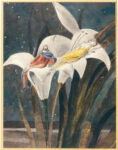 Key Themes in Blake’s Work:
Key Themes in Blake’s Work:
1. The Imagination as a Divine Faculty:
For Blake, the imagination was not merely a human faculty, but a divine power that could connect human beings to the infinite and the eternal. He believed that the imagination was the key to spiritual growth and transformation, and that it could reveal the hidden truths of the universe.
In his poetry and art, Blake often depicts the imagination as a visionary force that can pierce the veil of illusion and reveal the true nature of reality. He saw the imagination as a means of transcending the limitations of the material world and accessing a higher, more spiritual realm.
2. The Unity of Opposites:
Another central theme in Blake’s work is the idea of the unity of opposites. Blake believed that the universe was composed of opposing forces, such as good and evil, reason and imagination, body and soul, and that these forces were ultimately reconciled in a higher unity.
In his poetry and art, Blake often depicts these opposing forces as being in a state of dynamic tension, with each one necessary for the existence of the other. He saw the reconciliation of these opposites as the key to spiritual growth and the attainment of a higher state of consciousness.
3. The Critique of Rationalism and Materialism:
Blake was a fierce critic of the rationalism and materialism of his time, which he saw as limiting and oppressive forces that stifled the human spirit. He believed that the emphasis on reason and science had led to a narrowing of human consciousness and a loss of connection to the divine.
In his work, Blake often satirizes and critiques the institutions and ideologies of his time, such as the church, the state, and the industrial revolution. He sees these forces as agents of oppression that seek to control and dominate the human spirit, and he calls for a return to a more imaginative and spiritual way of life.
4. The Archetypal Symbolism:
Blake’s poetry and art are filled with complex and archetypal symbolism that draws on a wide range of mythological, religious, and esoteric traditions. He uses symbols such as the sun, the moon, the serpent, and the lamb to represent different aspects of the human psyche and the spiritual journey.
For Blake, these symbols are not merely literary devices, but are expressions of deep psychological and spiritual truths. He sees them as a way of tapping into the collective unconscious and accessing the universal patterns and archetypes that underlie human experience.
5. The Vision of a New Jerusalem:
Throughout his work, Blake presents a vision of a new Jerusalem, a transformed world in which the imagination and the spirit are freed from the chains of materialism and oppression. He sees this new Jerusalem as a state of spiritual enlightenment and liberation, in which human beings can realize their full potential and connect with the divine.
In poems such as “Jerusalem” and “Milton,” Blake depicts this new world as a place of beauty, harmony, and freedom, where the human spirit can flourish and create without limitation. He sees the attainment of this new Jerusalem as the ultimate goal of human life and the highest expression of the imagination.
The Relevance of Blake for Psychology and Spirituality:
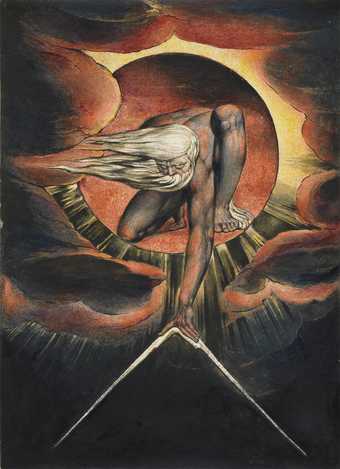 Blake’s emphasis on the imagination as a transformative and visionary power has important implications for psychology and spirituality. His work anticipates many of the key insights of depth psychology and transpersonal psychology, and his ideas continue to inspire and influence contemporary thinkers and practitioners.
Blake’s emphasis on the imagination as a transformative and visionary power has important implications for psychology and spirituality. His work anticipates many of the key insights of depth psychology and transpersonal psychology, and his ideas continue to inspire and influence contemporary thinkers and practitioners.
One of the central insights of Blake’s work is the idea that the imagination is a fundamental aspect of the human psyche, and that it plays a crucial role in psychological and spiritual growth. For Blake, the imagination is not merely a tool for artistic creation, but is a means of accessing deeper levels of consciousness and connecting with the divine.
This idea resonates with the work of psychologists such as Carl Jung and James Hillman, who emphasized the importance of the imagination in the individuation process and the development of the self. Jung saw the imagination as a key to unlocking the symbolic and archetypal dimensions of the psyche, and he used techniques such as active imagination and dream analysis to explore these dimensions.
Similarly, Hillman’s archetypal psychology stresses the importance of cultivating the imagination as a means of engaging with the deep patterns and images that shape our lives. For Hillman, the imagination is a powerful tool for psychological healing and transformation, and he encourages individuals to engage with the imaginal world through practices such as poetry, art, and mythology.
Blake’s critique of rationalism and materialism also has important implications for contemporary psychology and spirituality. In an age dominated by scientific reductionism and consumerist values, Blake’s call for a return to the imagination and the spirit seems more relevant than ever.
His work reminds us that there are dimensions of human experience that cannot be reduced to material or biological explanations, and that the cultivation of the imagination and the spirit are essential for psychological and spiritual well-being. Blake’s vision of a world transformed by the power of the imagination offers a powerful alternative to the disenchantment and alienation of modern life.
Finally, Blake’s archetypal symbolism and his vision of a new Jerusalem have important implications for the practice of psychotherapy and spiritual guidance. His work suggests that the symbols and images that arise in the psyche are not merely personal or idiosyncratic, but are expressions of universal patterns and archetypes that are shared by all human beings.
By working with these symbols and images in a therapeutic or spiritual context, individuals can tap into the transformative power of the imagination and connect with the deeper dimensions of their being. Blake’s vision of a new Jerusalem offers a powerful goal for this work, reminding us that the ultimate aim of psychological and spiritual growth is the realization of a higher state of consciousness and the creation of a more harmonious and enlightened world.
“I give you the end of a golden string;
Only wind it into a ball,
It will lead you in at Heaven’s gate,
Built in Jerusalem’s wall.”
Blake’s poetry and art are filled with complex and archetypal symbolism that draws on a wide range of mythological, religious, and esoteric traditions. He uses symbols such as the sun, the moon, the serpent, and the lamb to represent different aspects of the human psyche and the spiritual journey. For Blake, these symbols are not merely literary devices, but are expressions of deep psychological and spiritual truths. He sees them as a way of tapping into the collective unconscious and accessing the universal patterns and archetypes that underlie human experience.
Throughout his work, Blake presents a vision of a new Jerusalem, a transformed world in which the imagination and the spirit are freed from the chains of materialism and oppression. He sees this new Jerusalem as a state of spiritual enlightenment and liberation, in which human beings can realize their full potential and connect with the divine. In poems such as “Jerusalem” and “Milton,” Blake depicts this new world as a place of beauty, harmony, and freedom, where the human spirit can flourish and create without limitation. He sees the attainment of this new Jerusalem as the ultimate goal of human life and the highest expression of the imagination.
Blake’s emphasis on the imagination as a transformative and visionary power has important implications for psychology and spirituality. His work anticipates many of the key insights of depth psychology and transpersonal psychology, and his ideas continue to inspire and influence contemporary thinkers and practitioners. One of the central insights of Blake’s work is the idea that the imagination is a fundamental aspect of the human psyche, and that it plays a crucial role in psychological and spiritual growth. For Blake, the imagination is not merely a tool for artistic creation, but is a means of accessing deeper levels of consciousness and connecting with the divine.
This idea resonates with the work of psychologists such as Carl Jung and James Hillman, who emphasized the importance of the imagination in the individuation process and the development of the self. Jung saw the imagination as a key to unlocking the symbolic and archetypal dimensions of the psyche, and he used techniques such as active imagination and dream analysis to explore these dimensions. Similarly, Hillman’s archetypal psychology stresses the importance of cultivating the imagination as a means of engaging with the deep patterns and images that shape our lives. For Hillman, the imagination is a powerful tool for psychological healing and transformation, and he encourages individuals to engage with the imaginal world through practices such as poetry, art, and mythology.
Blake’s critique of rationalism and materialism also has important implications for contemporary psychology and spirituality. In an age dominated by scientific reductionism and consumerist values, Blake’s call for a return to the imagination and the spirit seems more relevant than ever. His work reminds us that there are dimensions of human experience that cannot be reduced to material or biological explanations, and that the cultivation of the imagination and the spirit are essential for psychological and spiritual well-being. Blake’s vision of a world transformed by the power of the imagination offers a powerful alternative to the disenchantment and alienation of modern life.
Finally, Blake’s archetypal symbolism and his vision of a new Jerusalem have important implications for the practice of psychotherapy and spiritual guidance. His work suggests that the symbols and images that arise in the psyche are not merely personal or idiosyncratic, but are expressions of universal patterns and archetypes that are shared by all human beings. By working with these symbols and images in a therapeutic or spiritual context, individuals can tap into the transformative power of the imagination and connect with the deeper dimensions of their being. Blake’s vision of a new Jerusalem offers a powerful goal for this work, reminding us that the ultimate aim of psychological and spiritual growth is the realization of a higher state of consciousness and the creation of a more harmonious and enlightened world.
William Blake’s visionary art and poetry offer a powerful and enduring testament to the transformative power of the imagination. His work reminds us that the cultivation of the imagination and the spirit are essential for psychological and spiritual well-being, and that the ultimate goal of human life is the realization of a higher state of consciousness and the creation of a more enlightened world. As we navigate the challenges and complexities of the modern world, Blake’s work continues to inspire and guide us, reminding us of the importance of embracing the visionary and the spiritual dimensions of human experience. His ideas and insights have important implications for contemporary psychology and spirituality, and his legacy continues to shape and inform our understanding of the human psyche and the nature of reality.
By engaging with Blake’s work and ideas, we can tap into the transformative power of the imagination and connect with the deeper dimensions of our being. We can learn to see the world anew, to perceive the infinite in the finite, and to create a new Jerusalem within ourselves and in the world around us. In the words of Blake himself: “I give you the end of a golden string; Only wind it into a ball, It will lead you in at Heaven’s gate, Built in Jerusalem’s wall.”
Blake’s artistic and literary career spanned more than four decades, during which he produced a vast body of work that included poetry, engravings, illustrations, and paintings. His major works showcase his unique vision and his mastery of various artistic and literary forms, from the lyrical simplicity of Songs of Innocence to the epic scope and complexity of Jerusalem. Throughout his life, Blake remained committed to his artistic and spiritual vision, often working in obscurity and poverty, but never losing sight of his belief in the transformative power of the imagination. His legacy continues to inspire and influence generations of artists, writers, and thinkers, who find in his work a source of inspiration and a call to embrace the visionary and the spiritual dimensions of human experience.
Blake’s life and work were shaped by the tumultuous political, social, and cultural developments of his time. He lived through the American and French Revolutions, the rise of industrialization and capitalism, and the emergence of new ideas in science, philosophy, and religion. Blake engaged with these developments in his art and poetry, often using them as a springboard for his own unique vision and critique of the world around him.
For example, Blake was deeply influenced by the radical political ideas of his time, particularly the notion of individual freedom and the right to self-determination. He saw the American and French Revolutions as important steps towards the liberation of the human spirit from the chains of tyranny and oppression. At the same time, he was critical of the violence and excesses of these revolutions, and he sought to articulate a more spiritual and imaginative vision of human emancipation.
Blake was also deeply engaged with the religious and philosophical debates of his time. He was critical of the dogmatism and moralism of conventional religion, and he sought to develop his own unique theology based on the power of the imagination and the unity of opposites. Blake’s religious vision was deeply influenced by his reading of mystical and esoteric texts, such as the works of Emanuel Swedenborg and Jacob Boehme, as well as by his own visionary experiences and insights.
In his art and poetry, Blake often used religious and mythological symbols and motifs to convey his spiritual and philosophical ideas. For example, he frequently depicted the figure of the “Divine Humanity” or the “Universal Man,” which he saw as the embodiment of the creative and transformative power of the imagination. He also used biblical and classical mythology to explore themes of creation, fall, and redemption, often subverting and transforming these traditional stories to suit his own unique vision.
Blake’s engagement with the artistic and literary traditions of his time was equally complex and multifaceted. He was deeply influenced by the works of earlier poets and artists, such as Milton, Michelangelo, and Dürer, but he also sought to break free from the constraints of classical form and convention. Blake’s art and poetry are characterized by their innovative and experimental style, which often combines text and image in unique and striking ways.
One of the most distinctive features of Blake’s art is his use of illuminated printing, a technique that he invented and perfected over the course of his career. This involved etching his text and images onto copper plates, which were then printed and hand-colored to create vivid and visionary works of art. Blake’s illuminated books, such as Songs of Innocence and of Experience and Jerusalem, are among his most famous and enduring works, and they showcase his unique approach to the integration of word and image.
Blake’s approach to art and creativity was deeply rooted in his belief in the power of the imagination as a divine and transformative force. For Blake, art was not merely a means of self-expression or aesthetic pleasure, but a way of accessing and revealing the deeper truths of the universe. He saw the artist as a prophet and visionary, whose task was to awaken and enlighten the human spirit through the power of the imagination.
This belief in the transformative power of art and the imagination had a profound impact on Blake’s own life and work. Despite facing numerous challenges and setbacks throughout his career, including poverty, obscurity, and misunderstanding, Blake remained committed to his artistic and spiritual vision. He continued to create and innovate until the end of his life, producing some of his most ambitious and visionary works in his later years.
Blake’s legacy has continued to grow and evolve in the centuries since his death. His work has been rediscovered and reappraised by successive generations of artists, writers, and thinkers, who have found in it a source of inspiration and insight. Today, Blake is widely recognized as one of the greatest and most original figures in the history of English art and literature, and his influence can be seen in fields as diverse as poetry, painting, music, and film.
At the same time, Blake’s work continues to challenge and provoke us, inviting us to question our assumptions and to imagine new possibilities for ourselves and for the world around us. His vision of a transformed humanity and a new Jerusalem remains a powerful and enduring symbol of hope and liberation, reminding us of the vast untapped potential of the human spirit.
In the end, perhaps the greatest lesson we can take from Blake’s life and work is the importance of staying true to our own unique vision and voice, even in the face of adversity and misunderstanding. Like Blake, we all have the power to create and transform the world around us through the power of the imagination and the spirit. By embracing this power and staying true to our deepest truths and aspirations, we can help to bring about the kind of world that Blake envisioned – a world of beauty, harmony, and freedom, where the human spirit can flourish and create without limitation.
Key Points and Ideas:
- William Blake was an English poet, painter, and printmaker whose work was characterized by vivid imagery, complex symbolism, and deep philosophical and religious themes. He was a visionary who believed in the power of the imagination as a divine force that could transform the world and connect human beings to the infinite.
- One of the central themes in Blake’s work is the idea of the imagination as a means of transcending the limitations of the material world and accessing a higher, more spiritual reality. He saw the imagination as the key to spiritual growth and the reconciliation of opposing forces within the self and the universe.
- Blake was a fierce critic of the rationalism and materialism of his time, which he saw as stifling the human spirit and leading to a narrowing of consciousness. His work often satirizes and critiques the institutions and ideologies of his era, calling for a return to a more imaginative and spiritual way of life.
- Blake’s poetry and art are filled with complex and archetypal symbolism that draws on a wide range of mythological, religious, and esoteric traditions. He uses symbols to represent different aspects of the human psyche and the spiritual journey, seeing them as expressions of deep psychological and spiritual truths.
- Throughout his work, Blake presents a vision of a new Jerusalem, a transformed world in which the imagination and the spirit are freed from the chains of oppression. He sees this as the ultimate goal of human life and the highest expression of the imagination.
- Blake’s emphasis on the transformative power of the imagination has important implications for psychology and spirituality, anticipating key ideas in depth psychology and transpersonal psychology. His work suggests that engaging with the imagination is crucial for psychological growth, healing, and the development of a more integrated and enlightened self.
- Blake’s life and work were shaped by the political, social, and cultural developments of his time, including the American and French Revolutions, the rise of industrialization, and new ideas in science, philosophy, and religion. He engaged with these developments in his art and poetry, using them as a springboard for his own unique vision and critique.
- Blake’s approach to art and creativity was rooted in his belief in the power of the imagination as a divine force. He saw the artist as a prophet and visionary whose task was to awaken and enlighten the human spirit through the power of the imagination.
- Despite facing numerous challenges and setbacks throughout his career, Blake remained committed to his artistic and spiritual vision, continuing to create and innovate until the end of his life. His legacy has continued to grow and evolve, inspiring and influencing generations of artists, writers, and thinkers.
- Ultimately, Blake’s life and work remind us of the importance of staying true to our own unique vision and voice, and of the transformative power of the imagination to create a more beautiful, harmonious, and liberated world. By embracing this power and staying true to our deepest truths, we can help to bring about the kind of world that Blake envisioned.
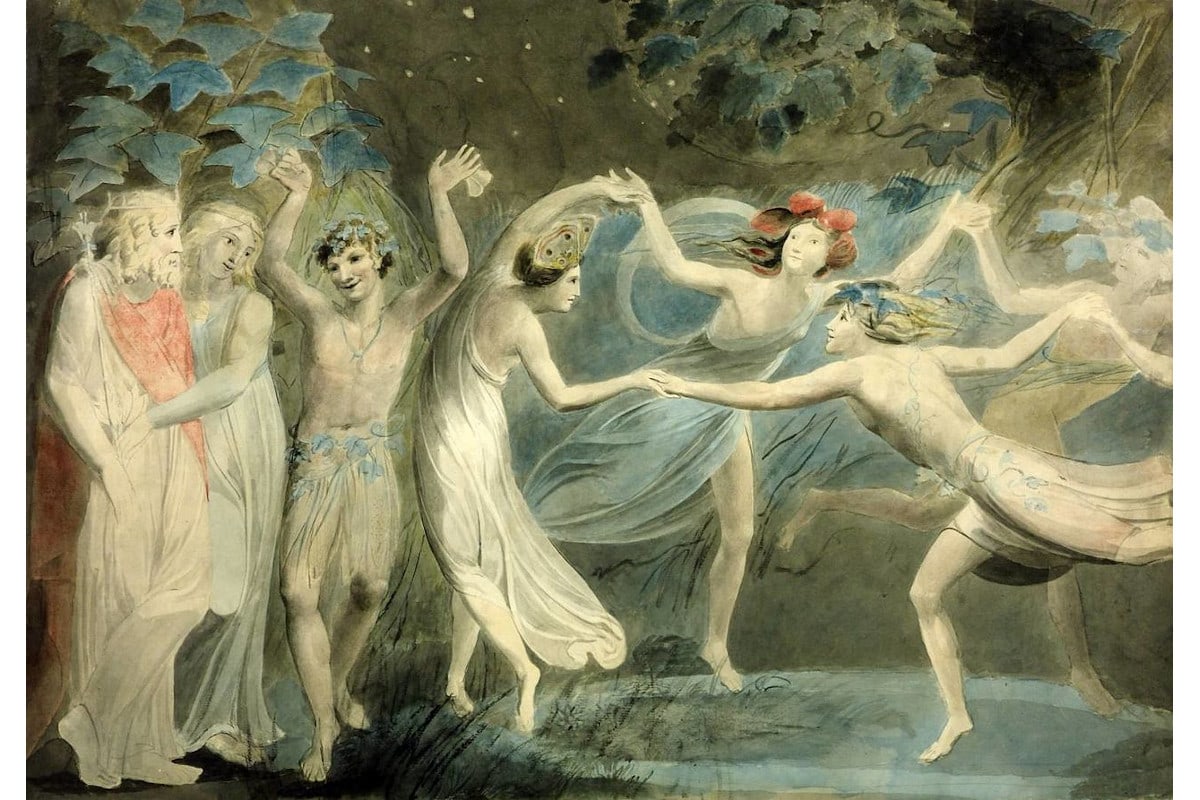
Major Works:
- Poetical Sketches (1783) – Blake’s first collection of poems, which showcased his early talent and his interest in themes such as love, mortality, and the supernatural.
- Songs of Innocence (1789) – A series of poems exploring the theme of childhood innocence, featuring some of Blake’s most famous works, such as “The Lamb” and “The Chimney Sweeper.”
- The Book of Thel (1789) – A prophetic poem that deals with themes of mortality, desire, and the relationship between the body and the soul.
- The Marriage of Heaven and Hell (1790-1793) – A satirical and visionary work that challenges conventional notions of good and evil, reason and energy, and presents Blake’s unique cosmology and philosophy.
- Songs of Experience (1794) – A companion piece to Songs of Innocence, featuring poems that explore the darker aspects of human experience, such as “The Tyger” and “London.”
- The First Book of Urizen (1794) – An epic poem that presents Blake’s mythological creation story and his critique of conventional religion and morality.
- Milton: A Poem in Two Books (1804-1810) – A visionary epic that reimagines the life and works of the poet John Milton, and presents Blake’s ideas about the role of the artist and the nature of creativity.
- Jerusalem: The Emanation of the Giant Albion (1804-1820) – Blake’s longest and most complex prophetic book, which presents his vision of a new Jerusalem and the spiritual transformation of humanity.
Timeline of Blake’s Life:
1757 – William Blake is born in London to James and Catherine Blake.
1772 – Blake begins his apprenticeship with the engraver James Basire.
1779 – Blake becomes a student at the Royal Academy of Arts.
1782 – Blake marries Catherine Boucher, who becomes his lifelong companion and collaborator.
1783 – Blake publishes his first collection of poems, Poetical Sketches.
1789 – Blake publishes Songs of Innocence and The Book of Thel.
1790-1793 – Blake composes The Marriage of Heaven and Hell.
1794 – Blake publishes Songs of Experience and The First Book of Urizen.
1800 – Blake moves to Felpham, Sussex, to work with the poet William Hayley.
1803 – Blake is charged with sedition after a confrontation with a soldier, but is later acquitted.
1804-1810 – Blake composes Milton: A Poem in Two Books.
1804-1820 – Blake works on his longest prophetic book, Jerusalem: The Emanation of the Giant Albion.
1827 – Blake dies in London at the age of 69.
Blake’s artistic and literary career spanned more than four decades, during which he produced a vast body of work that included poetry, engravings, illustrations, and paintings. His major works showcase his unique vision and his mastery of various artistic and literary forms, from the lyrical simplicity of Songs of Innocence to the epic scope and complexity of Jerusalem.
Throughout his life, Blake remained committed to his artistic and spiritual vision, often working in obscurity and poverty, but never losing sight of his belief in the transformative power of the imagination. His legacy continues to inspire and influence generations of artists, writers, and thinkers, who find in his work a source of inspiration and a call to embrace the visionary and the spiritual dimensions of human experience.
Bibliography:
- Blake, W. (1783). Poetical Sketches.
- Blake, W. (1789). Songs of Innocence.
- Blake, W. (1789). The Book of Thel.
- Blake, W. (1790-1793). The Marriage of Heaven and Hell.
- Blake, W. (1794). Songs of Experience.
- Blake, W. (1794). The First Book of Urizen.
- Blake, W. (1804-1810). Milton: A Poem in Two Books.
- Blake, W. (1804-1820). Jerusalem: The Emanation of the Giant Albion.
Further Reading:
- Ackroyd, P. (1995). Blake: A Biography. Knopf.
- Damon, S.F. (2013). A Blake Dictionary: The Ideas and Symbols of William Blake. Dartmouth College Press.
- Erdman, D.V. (1977). Blake: Prophet Against Empire. Dover Publications.
- Frye, N. (1947). Fearful Symmetry: A Study of William Blake. Princeton University Press.
- Gilchrist, A. (1863). Life of William Blake, “Pictor Ignotus”. Macmillan and Co.
- Jung, C.G. (1959). The Archetypes and the Collective Unconscious. Princeton University Press.
- Hillman, J. (1975). Re-Visioning Psychology. Harper & Row.
- Makdisi, S. (2002). William Blake and the Impossible History of the 1790s. University of Chicago Press.
- Mitchell, W.J.T. (1978). Blake’s Composite Art: A Study of the Illuminated Poetry. Princeton University Press.
- Raine, K. (1968). Blake and Tradition. Princeton University Press.
- Viscomi, J. (1993). Blake and the Idea of the Book. Princeton University Press.
- Yeats, W.B. (1896). William Blake and his Illustrations to The Divine Comedy. The Savoy.
- Bentley, G.E. Jr. (2001). The Stranger from Paradise: A Biography of William Blake. Yale University Press.
- Bronowski, J. (1972). William Blake and the Age of Revolution. Routledge & Kegan Paul.
- Essick, R.N. (1980). William Blake, Printmaker. Princeton University Press.
Read More Depth Psychology Articles:
Taproot Therapy Collective Podcast
Anthropology

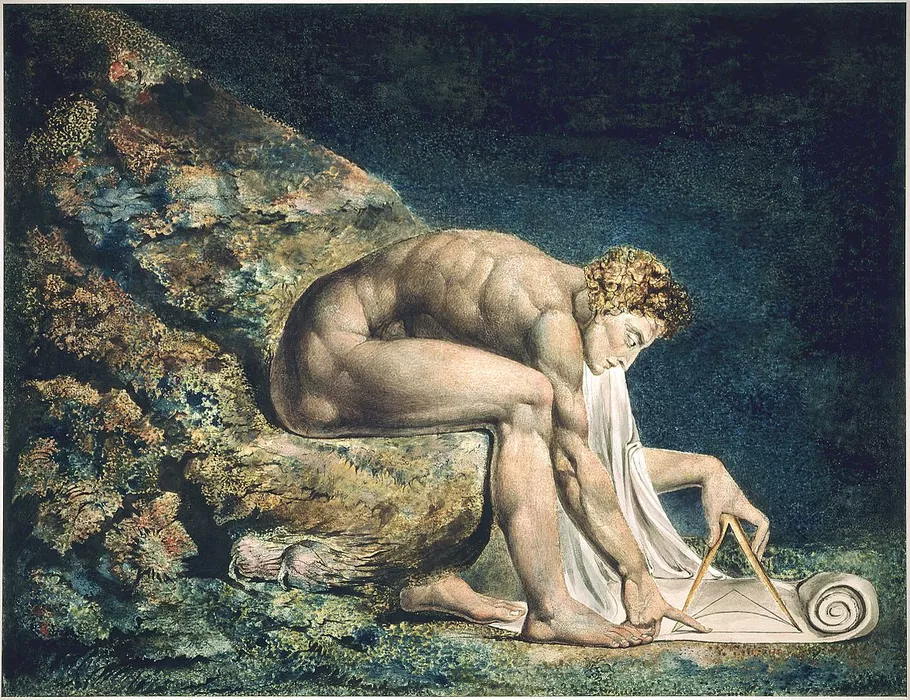
















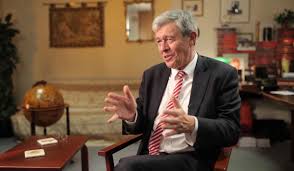

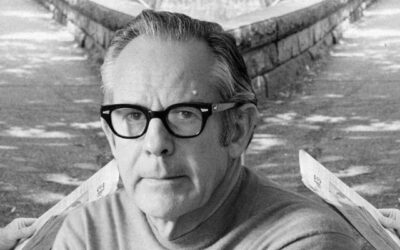
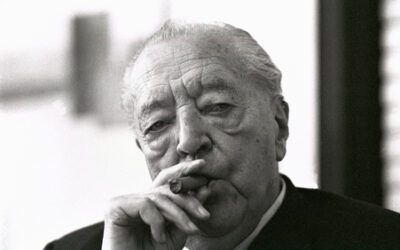



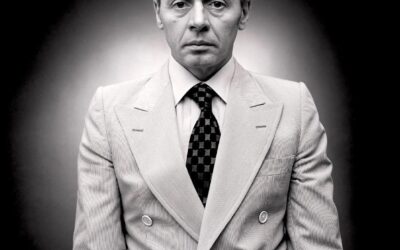
0 Comments